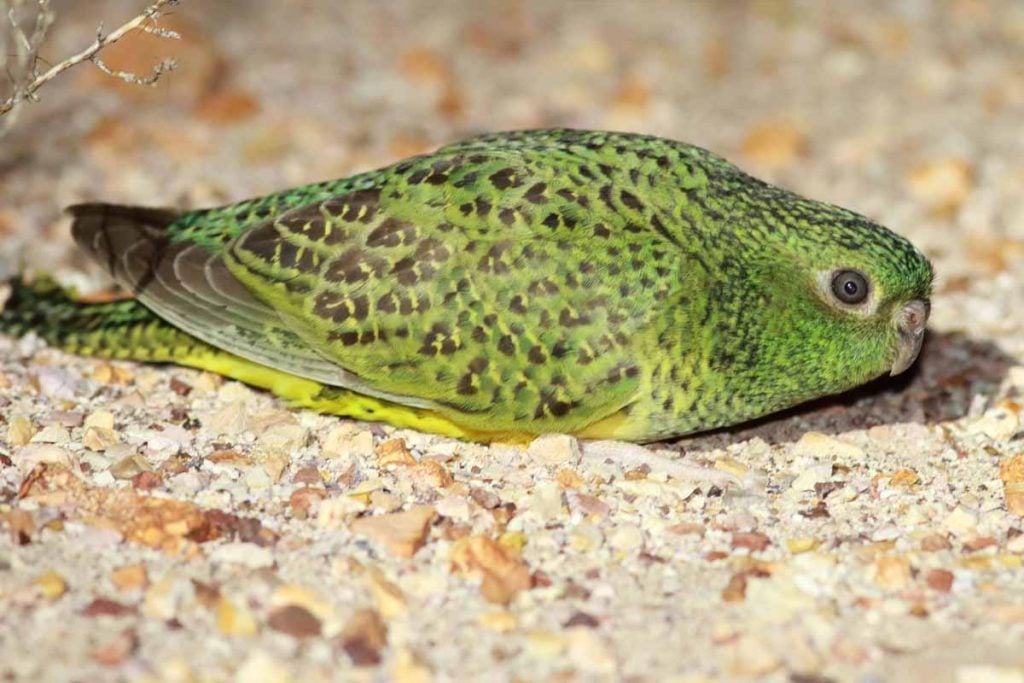Hope flares where silence once ruled. After a century without a trace, a rare bird steps back into view, not by luck but by careful listening and steady work. Indigenous rangers and scientists teamed up, read the land closely, and mapped threats with care. Their patient method blended field craft and smart tech, so rumor became evidence and evidence became action. The result is a clear plan to protect life, even in country that hides its secrets well.
Where the bird lives and what keeps it safe
Elusive and nocturnal, this desert parrot moves under darkness, then lies low in thick grass by day. The team focused on three essentials: where it lives, what harms it, and what people can do now. That clarity grounded decisions, because saving a shy species starts with firm basics.
From 2020 to 2023, rangers and researchers placed rugged audio recorders across dozens of sites. The calls are distinctive, so detections worked like pins on a map. When devices confirmed activity, camera traps followed. Those cameras revealed which predators prowled nearby while people slept and the landscape kept its usual rhythm.
They also collected predator scat to learn who was eating what, then layered decades of satellite imagery to track fires. Ecologist Nick Leseberg noted telephone-like “didly dip” phrases and bell-like “dink dink” notes in the soundscape. That mix of signs tightened the search, so each bird became easier to place and count.
How the landscape and fire patterns shape survival
Monitors detected night parrots at more than half the surveyed sites, spread across a wide desert swath. That pattern signals a real population, not a stray. Follow-up checks found daytime roosts inside older, dense spinifex. In this region, bull spinifex (Triodia longiceps) builds tough, domed shelters that block heat and hide resting birds.
Younger spinifex is sparse, so it cannot shield roosts the same way. These protective clumps take years to form, and once lost, there is no quick substitute. Meanwhile, the Great Sandy Desert sees lightning and long dry spells that spark fast fires. That pressure can reset habitat before it matures.
Country around roosts often burns on a cycle of several years, which is quick in plant time. Cooler, well-planned burns can break up fuel and create patchwork buffers. A mosaic reduces the chance a single wildfire will sweep the sandplains and erase cover in one blow, so each bird keeps a safe daytime refuge.
Predators, balance, and ground-nesting realities
Cameras often recorded dingoes near key habitat. At first glance, a wild dog near a small parrot seems bad. Yet scat told another story: cat remains showed up frequently. Because feral cats hunt stealthily at night, fledglings and ground nests face real risk when cats dominate.
Dingoes appear to suppress cats, through direct predation or by making hunting grounds less comfortable. That shift matters, because a single predator can tip outcomes during the brief nesting window. When cats move less freely, chicks gain days that often spell survival.
Management choices ripple. If dingo numbers fall, cats may surge and pressure rises on nests. Keep dingoes present, and cat pressure can drop. For a ground-roosting species, fewer cats near roosts mean more young to fledge, so each bird has a stronger path to adulthood.
Counting the bird and securing a stronghold
Based on where calls were heard, and how many called at once, the team estimates about 50 night parrots in the protected area. That is significant for a species with few confirmed records across Australia. Ngururrpa Country therefore stands out as an important stronghold, anchored by mature spinifex and quiet space.
A stronghold is not a guarantee. A rough fire season could punch holes through old grass, removing vital shelter. Predator programs that harm dingoes could open the door to more cats. Fresh disturbances—vehicle tracks, new weeds that alter fire, or grazing stock—can tilt the system the wrong way.
The fix is practical. Fire work should lean on ranger knowledge and modern mapping to time cooler-season burns. Those burns cut fuel and build natural breaks, while keeping core roosting patches intact. Predator control should avoid harming dingoes. A calmer landscape helps vegetation hold form, so each bird keeps cover intact.
Sharper tools and the lessons shaping next steps
New tools can sharpen counts. Genetic methods using DNA from feathers can refine population estimates without stress. Tiny tracking tags can reveal how far parrots travel at night, which feeding patches matter most, and which routes need protection during the driest months.
Partnership is the constant. Indigenous rangers and scientists aligned their methods with the land’s rhythm, then let devices listen while people rested. Because local knowledge guided placements and timing, data stayed relevant. The approach proves that careful listening pairs well with practical field work.
What these results say is plain. The species needs old, dense spinifex for daytime cover, a fire rhythm that lets that grass mature, and a predator community where cats do not run the show. With steady burns, smart predator management, and watchful eyes, each bird gets a fighting chance to persist.
Why steady local care now changes the odds for survival
Evidence replaces myth when people act with patience. Ngururrpa Country holds a real population—about 50 individuals—yet it sits on a knife edge. Cooler burns, dingo-aware predator work, and low disturbance keep shelters intact. Because the path is practical and proven, every season offers a new opportunity for this bird to endure.
